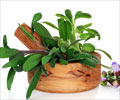Trick or treat! While youngsters dress up as ghosts and goblins and go door to door for Halloween, grown-ups across the United States are indulging in all things pumpkin spice.

Supermarket shelves are bursting with pumpkin spice cookies, chocolates, marshmallows, waffles, bagels, pasta, potato chips, Greek yogurt, hummus, granola and pudding, to name but a few.
Trader Joe's, a hip grocery chain, features "pumpkin-spiced pumpkin seeds" among its arm's length list of edible Halloween offerings.
Craft brewers are tapping into a growing market for limited-edition pumpkin-flavored beer. Bartenders mix pumpkin spice cocktails that might go nicely with a pumpkin spice e-cigarette.
"Now, everything from your morning coffee to salad mix has some type of pumpkin flavoring," food writer Samantha Bakall of the Oregonian newspaper in Portland, Oregon reported.
In a bit of investigative lifestyle journalism, Bakall set out to sample every pumpkin-flavored product she could find. She stopped after 26 items, leaving 17 more untested.
Advertisement
Mercifully, no one -- at least, not yet -- is marketing pumpkin spice tampons, after a convincing Photoshop image of a spoof pumpkin-scented Tampax box went viral online.
Advertisement
Halloween is big business, with American consumers expected to drop $7.4 billion this year on costumes, decorations, candy and more, the National Retail Federation has said.
Some of those greenbacks will be spent on real pumpkins.
Last year US farmers grew 1.13 billion pumpkins, the Department of Agriculture says. Many if not most became jack-o-lanterns, lit on October 31, then dumped in the trash the next day.
For Americans, pumpkins are pregnant with symbolism, even if they've never been a dietary mainstay, said Cindy Ott, author of "Pumpkin: The Curious History of an American Icon."
As more and more Americans moved into cities, the pumpkin came to be associated with the romance of nature and the virtues of country life, the St Louis University professor said.
"It's the meaning that people are celebrating," she told AFP. "There's no practical reason to put pumpkin spice in a cup of coffee or to put a pumpkin on your front stoop."
Starbucks is widely credited for launching the pumpkin spice craze with its Pumpkin Spice Latte, or PSL, concocted in 2003 in the "liquid lab" at its Seattle, Washington headquarters.
It marries an espresso with steamed milk -- that is, a latte -- with pumpkin spice sauce, cinnamon, clove and nutmeg, topped with whipped cream and a dash of pumpkin pie topping.
"Nobody knew back then what it would grow to be. It's taken on a life of its own," said Starbucks executive Peter Dukes, who spearheaded the project, in a corporate press release.
Yet it contains "absolutely no real pumpkins," according to food activist Vani Hari.
On her Foodbabe.com blog, Hari questioned the safety of the PSL's caramel coloring ingredient, as well as the beverage's "toxic dose" of sugar.
Andrea Riberi, senior vice president for consumer insights at market research firm Nielsen, said it remains to be seen if the "infiltration" of pumpkin-flavored products is more than a passing fad.
- Will they buy again? -
"Given the nature that these are seasonal, it will be interesting to see if people who, say, buy a pumpkin-flavored pancake mix will buy it again," she said.
But Melissa Connolly, a blogger, web designer and self-described pumpkin obsessive in North Carolina, dismissed any suggestion that America might be approaching "peak pumpkin."
"That's like asking if America is reaching 'peak football'," she told AFP in an email. "Pumpkin is here to stay."
Source-AFP













